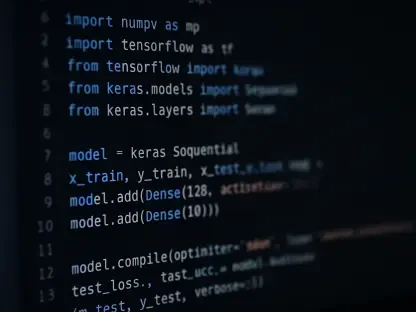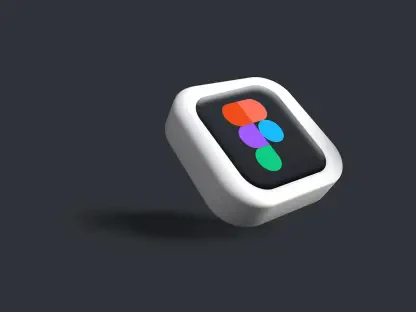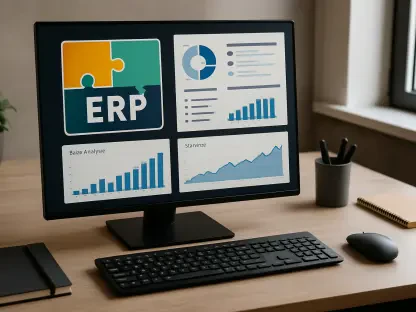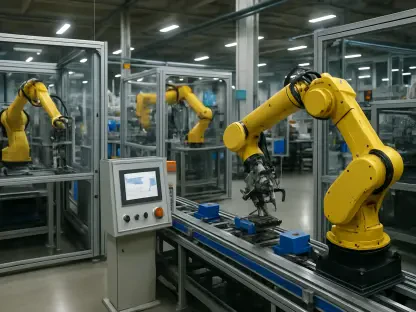Introduction to PDM and Modern Python Package Management
In the ever-evolving landscape of software development, managing dependencies in Python projects has become a critical challenge, especially as applications scale in complexity with numerous libraries and interwoven requirements that often lead to conflicts and version mismatches. The sheer volume of packages can create cumbersome workflows that derail productivity, making a robust solution essential to maintain order and efficiency.
Enter PDM, or Python Development Master, a tool designed to simplify package and dependency management with a standards-based approach. Built to address the shortcomings of traditional methods, PDM offers a unified system for handling environments and dependencies, ensuring smoother project organization. Its relevance cannot be overstated in an era where streamlined workflows directly impact development speed and quality.
This discussion delves into key aspects of using PDM effectively, covering setup processes, precise dependency management, advanced features for organizing workflows, and practical recommendations for optimal use. By exploring these areas, the goal is to equip developers with actionable insights to enhance their Python project management experience.
Why Choose PDM for Package Management?
Traditional tools like pip, while foundational, often fall short when managing intricate Python projects with multiple dependencies and environments. Manually handling virtual environments alongside pip can lead to errors, especially in collaborative settings where consistency across systems is vital. These limitations highlight the need for a more integrated solution.
PDM stands out by combining package and environment management into a single, cohesive tool. It adheres to Python ecosystem standards, supports project building and publishing, and reduces the risk of dependency conflicts through automated lock files. Such capabilities save significant time and effort, particularly in large-scale or multi-developer scenarios.
Moreover, PDM enhances project portability, allowing teams to replicate environments effortlessly across different machines. This advantage, coupled with its ability to minimize manual intervention, makes it a compelling choice for developers aiming to maintain clean, reproducible setups without the usual headaches associated with dependency management.
Mastering PDM: Key Features and Best Practices
Navigating the complexities of Python package management requires a tool that not only automates tasks but also provides flexibility for varied project needs. PDM offers a suite of features designed to tackle these challenges head-on, from initialization to advanced dependency handling. Understanding its core functionalities is crucial for maximizing its potential.
The following sections break down actionable best practices for using PDM, focusing on setup, dependency management, and leveraging advanced workflows. Each step is explained with clarity to ensure developers can implement these practices seamlessly, regardless of project size or complexity.
By adopting these methods, the aim is to create a structured approach to package management that reduces errors and boosts efficiency. Detailed examples and real-world scenarios accompany each practice to illustrate their application in practical settings.
Setting Up PDM for Your Projects
Getting started with PDM is straightforward, provided the system runs Python 3.7 or higher. Installation is best done in the user directory to avoid conflicts with system-wide Python setups. The command pip install --user pdm offers a reliable method to achieve this, ensuring accessibility without altering core Python installations.
Once installed, initializing a project is as simple as using pdm new to create a new directory or pdm init within an existing one to integrate PDM management. This setup process lays the foundation for dependency tracking and environment isolation, tailored to the specific project’s needs. For Windows users with multiple Python versions, invoking PDM via py -m pdm ensures the correct interpreter is used.
Example: Creating a New Project with PDM
To illustrate the setup process, consider creating a sample application named “my-app.” By executing pdm new my-app in the command line, PDM generates a project structure complete with configuration files. Verifying the setup by navigating into the directory and running pdm info confirms that the environment is correctly initialized, setting the stage for dependency additions.
Managing Dependencies with Precision
Adding and removing dependencies in PDM is intuitive, using commands like pdm add for installation and pdm remove for deletion. These operations automatically update the project’s dependency graph, ensuring all related packages remain compatible. Specifying dependencies follows PEP 508 standards, akin to entries in a requirements.txt file.
For installation consistency, pdm install creates a lock file to pin package versions before installing them, while pdm sync leverages an existing lock file for quicker setups without recalculating dependencies. These commands help maintain reproducibility across different environments, a critical factor in collaborative development.
To inspect dependencies, pdm list provides a straightforward overview, while pdm list --graph displays a visual tree to identify relationships between packages. This visibility aids in troubleshooting issues like version conflicts, making dependency management more transparent and manageable.
Case Study: Handling a Dependency Conflict
Consider a multi-package project where a conflict arises between two libraries requiring different versions of a shared dependency. Using pdm list --graph reveals the conflicting chain, allowing targeted updates via pdm update to resolve the mismatch. This approach minimizes disruption, ensuring the project remains stable while aligning dependencies.
Organizing Optional and Development Dependencies
Dependencies often serve distinct purposes, such as runtime requirements versus development tools, and PDM allows categorization to reflect this. By default, installed packages lack specific labels, but using the -dG flag, such as in pdm add -dG dev black, groups tools like code formatters under a “dev” category for clarity.
For production-specific dependencies, the -d flag tags them accordingly, as in pdm add -d regex for a library used solely in the live application. This separation ensures that only necessary packages are bundled in production builds, optimizing resource usage and reducing bloat.
Example: Separating Development and Production Dependencies
To demonstrate, installing regex for production with pdm add -d regex keeps it distinct from a development tool like black, added via pdm add -dG dev black. This organization aids in maintaining a lean production environment while ensuring developers have access to necessary utilities during coding phases.
Updating and Cleaning Dependencies Efficiently
Keeping dependencies current is vital for security and performance, and PDM simplifies this with pdm update, which refreshes all packages or specific ones with pdm update . Grouping updates, such as pdm update -G dev, targets specific categories, streamlining maintenance tasks.
For pinned versions, the --update-eager flag forces updates to the latest compatible releases, overriding static constraints. Additionally, pdm sync --clean removes unused dependencies, though caution is advised to apply this only within project contexts to avoid affecting system-wide installations.
Real-World Scenario: Streamlining a Legacy Project
In a legacy project burdened by outdated libraries, applying pdm update refreshed critical components to their latest versions, while pdm sync --clean eliminated redundant packages no longer referenced. This dual approach revitalized the project, ensuring consistency and reducing technical debt without extensive manual intervention.
Running Scripts and Programs with PDM
Executing scripts or tools within a PDM-managed project is seamless with pdm run, such as pdm run black . to format code across files. This command ensures the operation occurs within the project’s isolated environment, preventing interference with external Python setups.
PDM also supports single-file scripts with inline metadata per PEP 723, automatically creating temporary virtual environments for their dependencies. This feature is particularly useful for quick tasks or standalone utilities, maintaining isolation without permanent environment overhead.
Example: Automating Code Formatting
For consistent code style, running pdm run black . applies the Black formatter across the project, enforcing uniformity with minimal effort. This automation integrates smoothly into development workflows, ensuring that formatting rules are upheld without manual checks.
Leveraging pypackages for Dependency Isolation
PDM incorporates the __pypackages__ directory concept from PEP 582, enabling dependency bundling directly within a project’s structure without relying on virtual environments. Though PEP 582 was not universally adopted, PDM supports this for specific use cases like vendoring custom packages.
While this approach offers flexibility for offline or specialized deployments, PDM advocates for virtual environments as the standard for broader compatibility and isolation. The __pypackages__ method remains a niche option, best reserved for scenarios where traditional environments are impractical.
Case Study: Vendoring Custom Packages
In a project requiring a modified library for offline deployment, embedding it via __pypackages__ allowed direct inclusion in the source tree. This setup ensured functionality without internet access, demonstrating how PDM adapts to unique constraints while maintaining project integrity.
Conclusion: Is PDM the Right Choice for You?
Reflecting on the journey through PDM’s capabilities, it becomes evident that its strengths in integrating package and environment management provide a robust solution for Python developers. The automation and flexibility it offers stand out as game-changers for handling complex dependencies.
For those managing multiple or intricate projects, adopting PDM proves to be a strategic move, especially as an alternative to tools like Poetry. Moving forward, starting with smaller initiatives to test its features is a prudent step, allowing gradual adaptation to its workflows.
Considering factors like project scale and the initial learning curve is essential before full adoption. The next actionable step involves experimenting with PDM in a controlled setting, evaluating its impact on efficiency, and scaling its use as confidence in its benefits grows.









